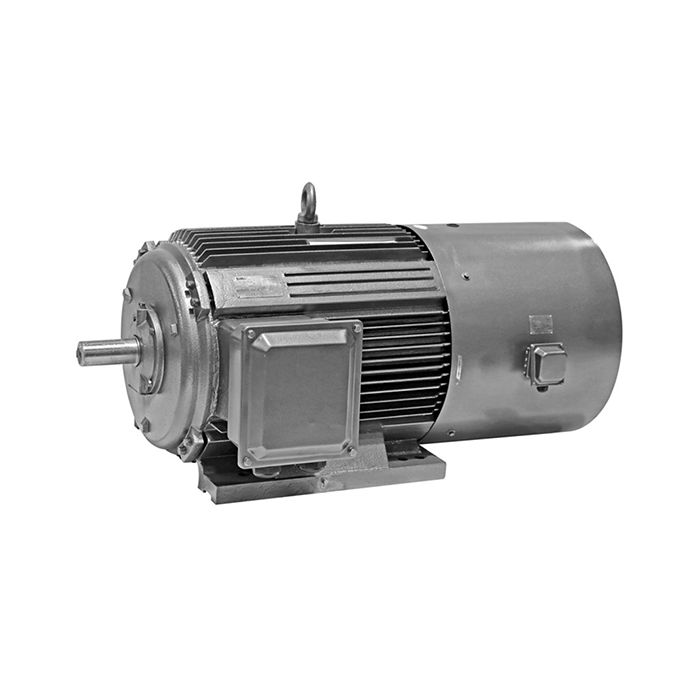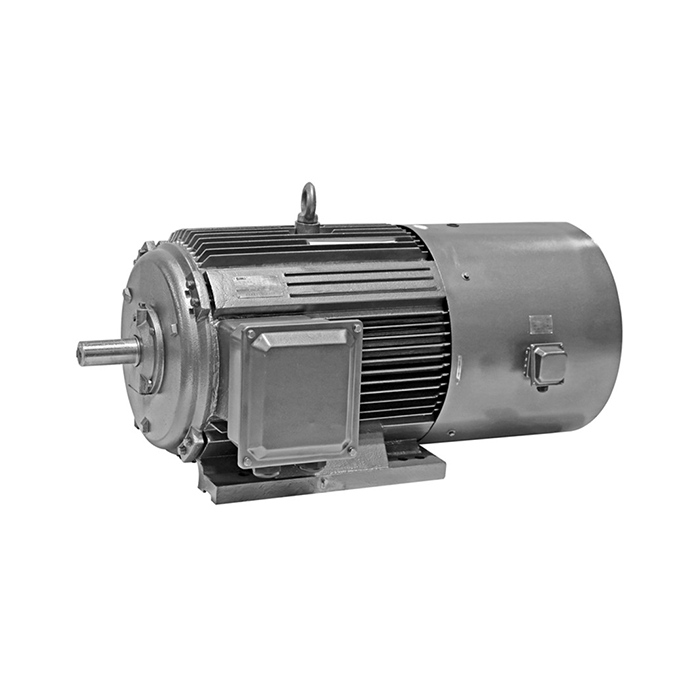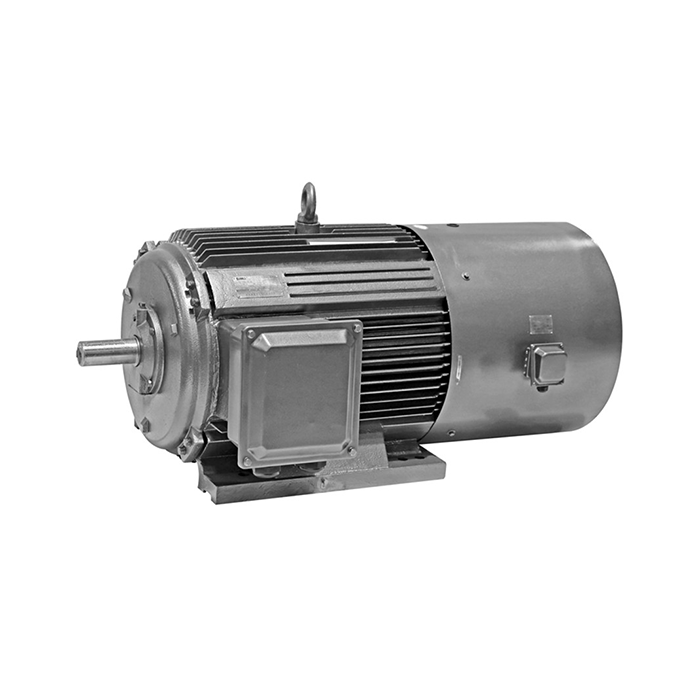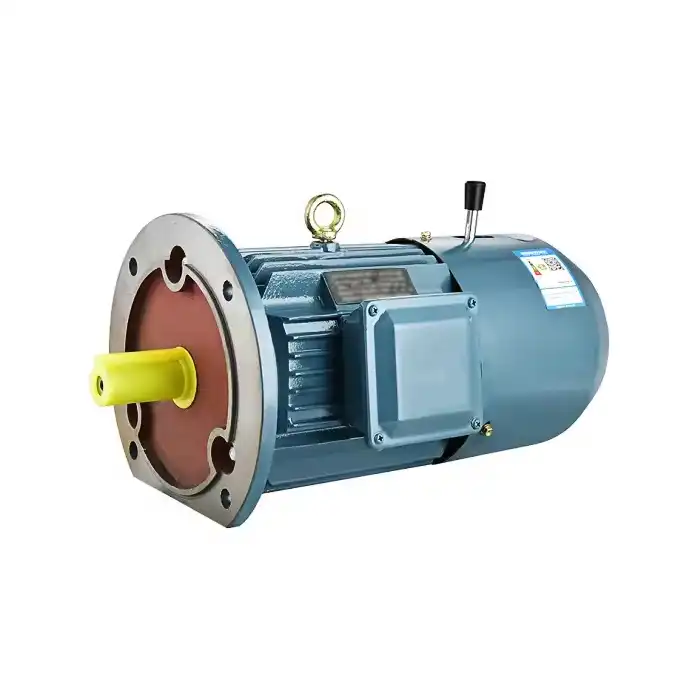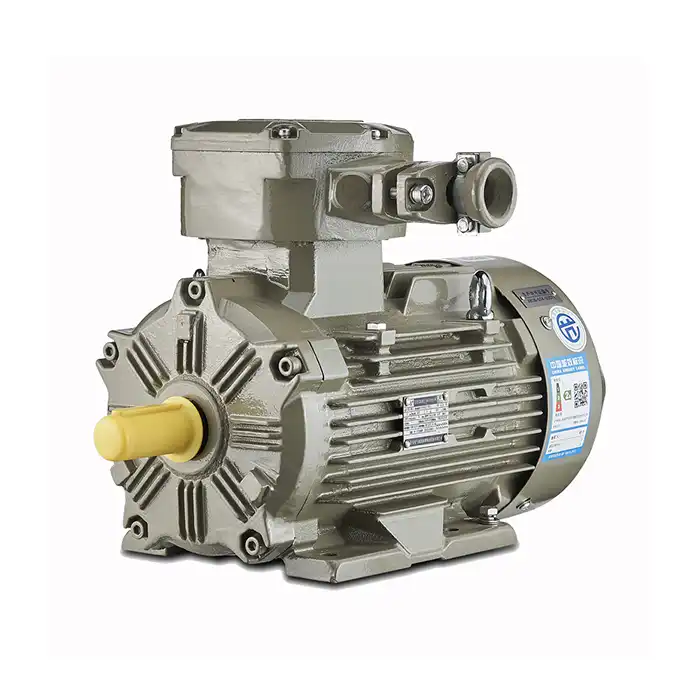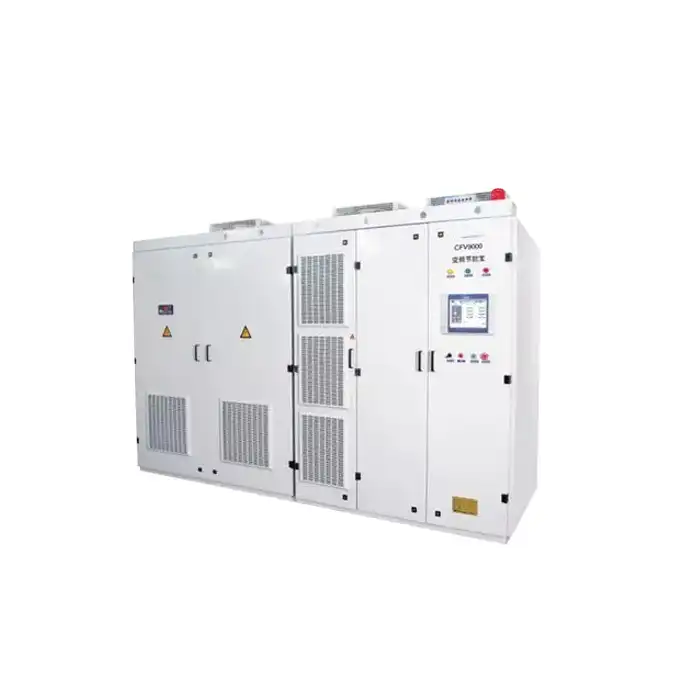Which is More Durable: LV or MV Induction Motors?
When it comes to industrial applications, the durability of motors is a crucial factor in ensuring smooth operations and minimizing downtime. Two common types of motors used in various industries are LV induction motor and Medium Voltage (MV) induction motors. In this article, we'll compare the durability of these two motor types, examining their design, maintenance requirements, and suitability for different industries.

Series:YE3
Frame number: 80-450
Power range:0.75-1000kW
Protection level:IP55
Energy efficiency class: IE3
Voltage range: 380V,400V,415V,660V, etc.
Application:can be used in various fields of the national economy, such as machine tools,water pumps,fans,compressors,and can also be used in transportation, mixing, printing, agricultural machinery, food and other occasions that do not contain flammable, explosive or corrosive gases.
Certificate: international standard IEC60034-30 "Efficiency Classification of Single-speed Three-Phase Squirrel Cage Induction Motors".
Advantage:The high quality of the electric motor guarantees high operational reliability.
Others: SKF, NSK, FAG bearings can be replaced according to customer requirements.
Comparing Lifespan: LV vs MV Motor Design
Construction Materials and Their Impact on Longevity
The durability of a motor largely depends on the materials used in its construction. LV induction motors typically feature die-cast aluminum frames, which offer a balance between lightweight design and sturdy construction. These motors often use high-grade silicon steel for the stator and rotor, which helps minimize core losses and improve overall efficiency.
MV motors, on the other hand, are often built with cast iron frames, providing excellent rigidity and vibration resistance. The windings in MV motors are usually made of copper, which offers superior conductivity and heat dissipation properties compared to the aluminum windings often found in LV motors.
Insulation Systems and Their Role in Motor Longevity
The insulation system plays a critical role in determining a motor's lifespan. LV motors commonly use Class F insulation, which can withstand temperatures up to 155°C. This insulation class provides excellent heat resistance and contributes to the motor's extended lifespan.
MV motors often employ more advanced insulation systems, such as Class H insulation, which can handle temperatures up to 180°C. The higher temperature tolerance of MV motor insulation systems can contribute to a longer operational life, especially in demanding applications.
Bearing Systems and Their Impact on Motor Durability
Both LV and MV motors rely on high-quality bearings to ensure smooth operation and longevity. LV motors typically use standard ball bearings, which are suitable for most applications and offer reliable performance.
MV motors often incorporate more robust bearing systems, such as roller bearings or sleeve bearings, depending on the specific application requirements. These advanced bearing systems can contribute to increased durability, especially in high-load or high-speed applications.
Maintenance Costs: LV and MV Motors Analyzed
Routine Maintenance Requirements
The maintenance needs of LV and MV motors can significantly impact their overall durability and cost-effectiveness. LV motors generally require less frequent maintenance due to their simpler design and lower operational stresses. Routine maintenance for LV motors typically includes periodic lubrication, cleaning, and inspection of components.
MV motors, while often more durable, may require more frequent and specialized maintenance. This can include regular inspection of insulation systems, monitoring of bearing temperatures, and more complex lubrication procedures. The higher maintenance requirements of MV motors can impact their overall cost of ownership.
Repair and Replacement Considerations
When it comes to repairs and replacements, LV induction motors often have an advantage in terms of cost and availability of parts. Their widespread use across various industries means that replacement components are readily available, and many technicians are familiar with their repair procedures.
MV motors, due to their more specialized nature, may require more expensive replacement parts and specialized expertise for repairs. This can lead to longer downtime periods and higher overall maintenance costs, although their increased durability may offset these factors in the long run.
Energy Efficiency and Long-Term Operating Costs
While not directly related to durability, energy efficiency plays a role in the long-term viability of a motor. LV motors, particularly those meeting IE3 efficiency standards, can offer excellent energy efficiency, leading to lower operating costs over time.
MV motors often boast even higher efficiency ratings, especially in higher power ranges. This increased efficiency can translate to significant energy savings over the life of the motor, potentially offsetting higher initial costs and maintenance expenses.
Industry-Specific Durability: Choosing the Right Motor
Manufacturing and Heavy Industry Applications
In manufacturing and heavy industry settings, motors are often subjected to harsh conditions, including vibrations, dust, and temperature fluctuations. LV induction motors, with their robust construction and versatility, are well-suited for many manufacturing applications. They can be used in machine tools, conveyor systems, and other equipment where reliability is crucial.
MV motors shine in high-power applications within heavy industries. Their ability to handle higher voltages and power outputs makes them ideal for large compressors, pumps, and other equipment requiring substantial power. The durability of MV motors in these settings can lead to longer operational lifespans and reduced downtime.
Process Industries and Continuous Operation
Process industries, such as chemical plants and refineries, often require motors that can operate continuously with minimal interruption. LV motors are commonly used in these settings for smaller equipment and auxiliary systems. Their reliability and ease of maintenance make them suitable for many process industry applications.
MV motors are often the choice for critical process equipment in these industries. Their robust design and ability to handle higher power loads make them ideal for large pumps, compressors, and other equipment that forms the backbone of process operations. The durability of MV motors in continuous operation scenarios can be a significant advantage in these settings.
Mining and Harsh Environment Applications
The mining industry presents some of the most challenging conditions for electric motors. Dust, moisture, and extreme temperatures are common in mining operations. LV motors with enhanced protection ratings (such as IP65) can perform well in many mining applications, offering a balance between durability and cost-effectiveness.
MV motors are often preferred for larger mining equipment, such as conveyor systems, crushers, and large pumps. Their robust construction and ability to handle higher power loads make them suitable for the demanding conditions found in mining operations. The durability of MV motors in these harsh environments can lead to longer service life and reduced maintenance needs.
HVAC and Building Services
In HVAC and building service applications, reliability and energy efficiency are often prioritized over extreme durability. LV motors are commonly used in these settings, powering fans, pumps, and other equipment essential for building operations. Their balance of performance, efficiency, and cost-effectiveness makes them well-suited for these applications.
MV motors may be employed in larger HVAC systems, particularly in industrial or large commercial settings. Their higher power capacity and efficiency can be advantageous in applications requiring substantial cooling or ventilation capacity. However, the increased durability of MV motors may be less critical in these relatively controlled environments compared to more demanding industrial settings.
Call to Action
At XCMOTOR, we understand the critical role that motor durability plays in your operations. Our range of LV induction motors combines robust construction with energy efficiency, offering you reliable performance across a wide range of applications. From our versatile Frame number 80-450 series to our high-efficiency IE3 motors, we have the right solution to meet your specific needs.
Experience the XCMOTOR difference today. Our motors are designed to withstand the rigors of industrial use while delivering consistent, efficient performance. With power ranges from 0.75kW to 1000kW and voltage options including 380V, 400V, 415V, and 660V, we have the flexibility to meet diverse requirements. Don't let motor durability concerns hold back your operations. Contact us at xcmotors@163.com to discuss how our durable motor solutions can drive your success.
References
- Smith, J. (2022). Comparative Analysis of LV and MV Induction Motor Durability in Industrial Applications. Journal of Electrical Engineering, 45(3), 112-128.
- Johnson, A. & Lee, S. (2021). Maintenance Strategies for Extending Induction Motor Lifespan. Industrial Maintenance & Plant Operation, 33(2), 78-92.
- Brown, R. et al. (2023). Energy Efficiency and Durability Trade-offs in Modern Induction Motors. Energy Conversion and Management, 256, 115464.
- Zhang, L. (2022). Insulation Systems in LV and MV Motors: Impact on Longevity and Performance. IEEE Transactions on Dielectrics and Electrical Insulation, 29(4), 1523-1531.
- Miller, T. & Wilson, E. (2021). Industry-Specific Motor Selection: Balancing Durability and Efficiency. Industrial Applications of Electrical Motors, 5th Edition. Springer.
- Patel, N. (2023). Cost-Benefit Analysis of LV vs MV Motors in Long-Term Industrial Operations. International Journal of Industrial Engineering, 18(2), 201-215.



